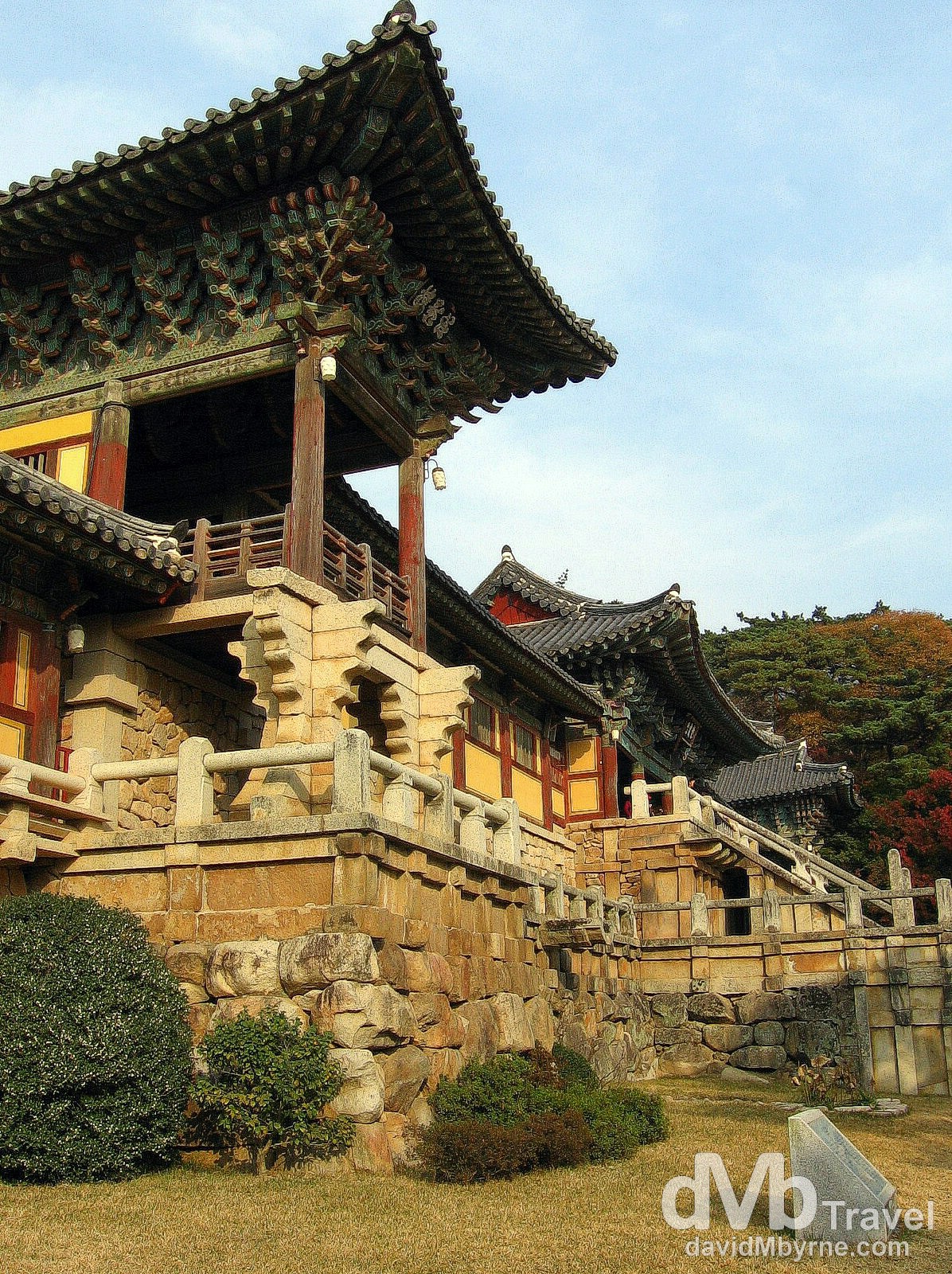The Bulguksa Temple (temple of the Buddha land) is the most famous temple in South Korea and home to seven of the country’s listed National treasures.

Bulguksa Temple (![]() ), Gyeongju, South Korea. November 10th, 2007 || From a November 2007 visit to Gyeongju, South Korea
), Gyeongju, South Korea. November 10th, 2007 || From a November 2007 visit to Gyeongju, South Korea
A temple was first constructed on this site in 528, but, & like nearly every historic building in Korea, the present day structure is a modern day reconstruction following centuries of wars and foreign invasions. The temple is classified as ‘Historic and Scenic Site No. 1’ by the South Korean government and in 1995 it, along with the nearby Seokguram Grotto, was added to the UNESCO World Heritage List of protected sites. The temple, considered as a masterpiece of the golden age of Buddhist art in the Silla kingdom, is currently the head temple of the 11th district of the Jogye Order of Korean Buddhism.
– UNESCO commenting on Seokguram Grotto and Bulguksa Temple

Doors in the grounds of the Bulguksa Temple, Gyeongju, South Korea. November 10th, 2007 || From a November 2007 visit to Gyeongju, South Korea
______________________________________________________________________
